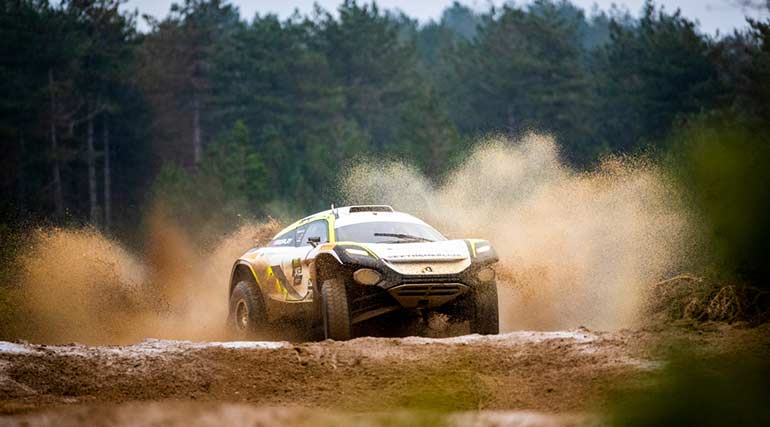Motoring & Transport, Sport | Posted on January 28th, 2022 | return to news
Extreme E is the future of motor racing
By Gerry Clarke | Images supplied by Extreme E

For many years I have been an enthusiastic follower of Formula One motor racing and have fond memories of going to GP races at Silverstone, Brands Hatch and Goodwood with my dad during the heyday of the sport in the UK.
Now F1 has evolved into a major international sporting event drawing audiences around the world. Since being bought for over £3 billion by the US media organisation Liberty Media, it has now become a media circus with glitzy Hollywood celebrities parading alongside gas guzzling supercars. Millions are spent flying the expensive entourage of men and machines round the globe to satisfy the demand for an entertainment spectacle. What price global warming? It seems the original ideals of men and machines racing to track glory have disappeared in a cloud of CO2.
Recently though, I discovered the exciting new motor sport of Extreme E which is the future of motor racing in the most environmentally friendly and sustainable way. So what’s it all about?



Extreme E is a futuristic, off-road racing series, a sort of Star Wars pod racing meets the RAC and Dakar rallies, designed to showcase electric SUVs and automobile technology. It takes place in some of the world’s most remote and challenging places, including Arctic, desert, island and coastal locations, places that are being adversely affected by climate issues or human interference. The aim is to highlight climate change in some of the world’s most endangered environments and demonstrate how electric vehicles can lead the way to a lower carbon future. To maintain a low carbon footprint, there are no race spectators, and the races are streamed live using drones and in car cameras covering every racing angle.
The most recent race in the series, the Jurassic X Prix, took place in Dorset in December and I took a trip to see the action and hear more about the philosophy. The organisers wanted to highlight climate change at global heritage sites subject to erosion and inundation which will worsen if nothing is done to combat it. Sea levels will rise which means deeper waters and bigger waves will reach inland, eroding salt marshes, beaches, dunes and cliffs. Extreme E developed a legacy programme with the National Trust in Dorset to improve biodiversity and help with the reintroduction of beavers. Similar projects have been planned in other areas under threat around the world.



A Future Odyssey?
The Extreme E race vehicles, named ODYSSEY 21, are electric SUVs, the most popular vehicles on the market today. The advanced batteries are charged by a sustainable fuel production process, using water and sun to generate hydrogen power which in turn charges the battery. The hope is that the race series will create research and development opportunities and technological innovations that will filter into the consumer market.
All the vehicles are identical, but what differentiates them are the drivers and teams. Race weekends include time trials and head-to-head races with male and female drivers switching over during race sessions, which adds to the excitement. Points are accumulated and result in a winning team with two drivers. The Jurassic X Prix was won by X44 team owned by Lewis Hamilton but the overall winner of the 2021 inaugural championship was Nico Rosberg’s RXR team.
With McLaren now joining the race series, alongside teams owned by the likes of Hamilton, Button, Rosberg and Carlos Sainz, 2022 is going to be a year to remember. I can’t wait to enjoy watching the races from the comfort of an armchair in front of a totally immersive VR media screen. What price the future of motor racing.
Please share post:
Tags: #ExtremeE, #JurassicXPrix








